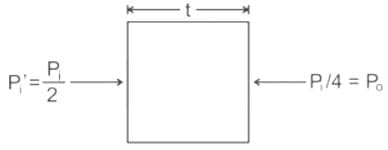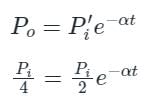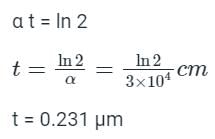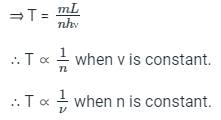Test: Optical Absorption - Electronics and Communication Engineering (ECE) MCQ
5 Questions MCQ Test - Test: Optical Absorption
A photo diode is illuminated by light with 700 nm wavelength and power of 4 mW. If the open circuit current produced is 1mA then the internal quantum efficiency of photo diode is
A Germanium sample of dimensions 1 cm x 1 cm is illuminated with a 20 mW, 600 nm laser light source as shown in the figure. The illuminated sample surface has a 100 nm of loss-less Silicon dioxide layer that reflects one-fourth of the incident light. From the remaining light, one-third of the power is reflected from the Silicon dioxide-Germanium interface, one-third is absorbed in the Germanium layer, and one-third is transmitted through the other side of the sample. If the absorption coefficient of Germanium at 600 nm is 3 x 104 cm-1 and the bandgap is 0.66 eV, the thickness of the Germanium layer, rounded off to 3 decimal places, is ______ μm.
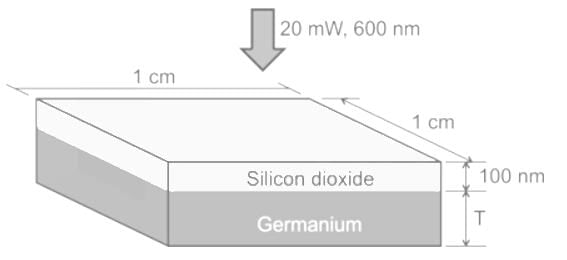

A silicon semiconductor slab has absorption coefficient of 102 cm-1 at wavelength of 1 μm. If 90% of the incident flux is to be absorbed then the thickness of the slab required is:
Photons absorbed in matter are converted to heat. A source emitting n photon/sec of frequency ν is used to convert 1kg of ice at 0°C to water at 0°C. Then, the time T taken for the conversion
The absorption coefficient of semiconductor materials is strongly dependent on __________


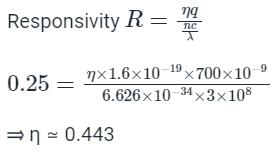


 power, the power reflected from
power, the power reflected from  Ge Interface is:
Ge Interface is:



